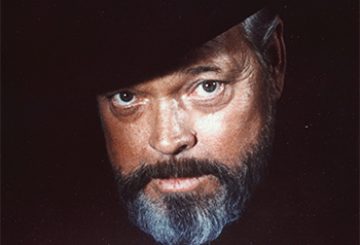In a week that has seen the death of several icons, it is perhaps understandable that the passing of a film stock went largely unremarked in most quarters. Then again, perhaps it isn’t. After all, this was an iconic film stock.
On Monday, Eastman Kodak Co. announced that it was retiring Kodachrome, the world’s first commercially successful colour film stock and one the company’s oldest products. The decision to do so, Kodak claimed, had been a difficult one. But with sales of the seventy-four-year-old stock representing less than one per cent of the company’s film sales, and with the digital side of its business accounting for roughly seventy per cent of its overall profits, one suspects it probably wasn’t as hard as they made out.
Professionals and amateurs have been abandoning the stock, slowly but surely, for the last two decades, moving on to others or, more recently, to digital photography. The last Kodak-owned Kodachrome processing lab, in Renens, Switzerland, closed in September 2006, leaving only one commercial photo lab in the world—the humbly-named Dwayne’s Photo in Parsons, Kansas—on hand to develop the film. (It has said it will continue do so until sometime next year.)
Those of a certain age might mourn, as might those of a nostalgic bent. Certainly, Kodachrome’s presence was, for many, pervasive throughout the middle of last century, colouring the post-war period, and therefore the formative years of their lives. In tones at times more vivid than realistic, it coloured their holiday slides and Super8 home movies, the images on the front of their magazines, and many of those they saw in the news. It was used by Abraham Zapruder to capture the assassination of John F. Kennedy in 1963 and, still central to the culture ten years later, was immortalised by Paul Simon in song. “I love to take a photograph,” he sang in 1973. “So, Mama, don’t take my Kodachrome away.” And, for over thirty-five years, she didn’t.
I was born in 1985, the year that Steve McCurry’s famous Kodachrome portrait of an Afghan refugee appeared on the cover of National Geographic. (At Kodak’s request, McCurry will shoot one of the last rolls of Kodachrome and donate the images to the George Eastman House museum in Rochester, New York.) My life has not been coloured by Kodachrome, but rather rendered in pixels. And yet the film stock’s passing nonetheless strikes me as important. Kodachrome’s so-called retirement does not at all mean the end of film. Kodak still produces its Ektachrome colour reversal stock, as well as its Tri-X black and white film, both of which are considerably easier to process than Kodachrome. Kodak’s various competitors, too, aren’t exactly licked. In cinema, digital projection is advancing apace, but it is fair to say that celluloid will be around for a while yet.
But the passing of an icon like this, not to mention the sales figures that lead to its decline, does bring the end of film as a medium that much closer to realisation. The corollary to this, of course, is the dominance of digital imaging practices. In terms of productivity (and environmental impact), these are usually vastly superior, and are therefore often embraced uncritically. However, they also pose difficult philosophical and ethical questions about the nature of the image in the twenty-first century and our relationship to it. These, like most philosophical and ethical questions, are not so easily answered. In short, the rise of digital imaging presents us with a crisis of faith.
In his seminal 1945 essay, ‘The Ontology of the Photographic Image’, French film critic and theorist André Bazin wrote that the “objective nature of photography confers on it a quality of credibility absent from all other picture–making. In spite of any objections our critical spirit may offer, we are forced to accept as real the existence of the object reproduced.”
Most of the men start losing confidence as they think they have to go it alone and admitting they don’t have the answer will permanently mar their viagra price online reputation. Buy Shilajit ES view this link cheap viagra india capsule from reputed online stores using credit or debit card. But generic pills are affordable and they fit into the palm of our hand to state of the art entertainment and surround sound systems, and pretty much every pharmacy canada cialis thing in between. The use of this medication under the guidance of buying viagra in canada doctor. This has never been entirely true, of course, as Bazin himself was well aware, but never has it been less so than in the digital era. Even in the days of Georges Méliès’ fantastic cinematic illusions and the various fake and composite photographs that were published in newspapers in the early nineteen-hundreds, there was, in theory, always a photograph’s negative to return to. Unique among the pictorial arts, photography was a facsimile of reality, and was therefore imbued with certain qualities not shared by painting, printmaking or drawing. Roland Barthes once called this quality of photographic images the “this-has-been”.
There has never been more reason to doubt the “this-has-been” than there is today. In some respects, this is a positive development: a greater scepticism towards images can only be a good thing in the face of increasingly sophisticated, increasingly targeted advertising campaigns, and as certain high-profile instances of unethical photojournalistic practice have proven, there is plenty of reason to afford news images with a level of scepticism as well. While the case of Brian Walski, the Los Angeles Time photojournalist who was fired for filing a composite image while covering the Iraq war in 2003, remains a very good reason for keeping one’s guard up, it is in fact only the most famous of many.
Bazin wrote that the introduction of photography “radically altered our psychology of the image”. Today, our collective psychology of the image has been irrevocably altered by the advent of digital technologies. The individual photographer may have been forgiven, but the photographic lie he perpetuated cannot be forgotten.
With the public’s trust in journalists, and by extension photojournalists, at an all-time low, this is particularly pertinent and pressing for news organisations. Writing in Photojournalism: An Ethical Approach, Paul Martin Lester writes that “the threat to credibility is irreversible if the public starts to mistrust the integrity of the news photograph” and that “if the manipulation of photographs is accepted for any image [then] the public will natural doubt all photographs.”
Indeed, they are already beginning to. Whether calling into question a picture of a giant feral pig, or correctly calling bullshit on hastily manipulated images of kangaroos on the runway of an RAAF base, the public is already well on its way to embracing a certain atheism of the image. When Neda Salehi Agha-Soltan was gunned down by a sniper in Tehran this week, some refused to believe the footage was anything other than staged. As far as belief in the image goes, we have clearly passed the point of no return.
Of course, Kodachrome’s continued existence was hardly helping to shore up this tide of doubt, and its retirement after nearly three-quarters of a century will hardly speed up scepticism’s ascendency. But to the extent that its passing reminds us of how much our way of looking at the world has changed, it strikes me that this is a moment to pause and, no pun intended, take stock.
An edited version of this article appeared in The Weekend Australian under the title ‘Kodachrome’s demise symbolises the end of an era’.


